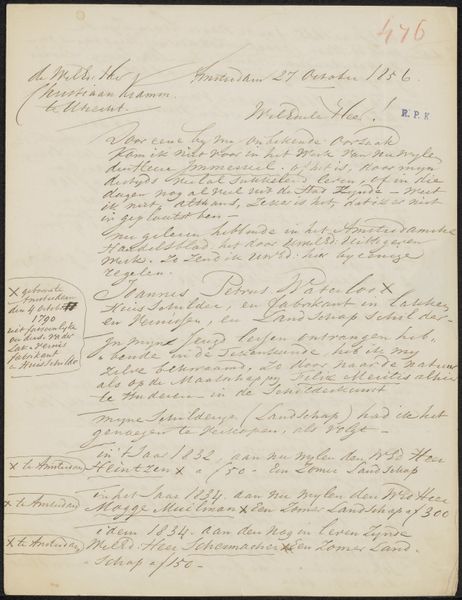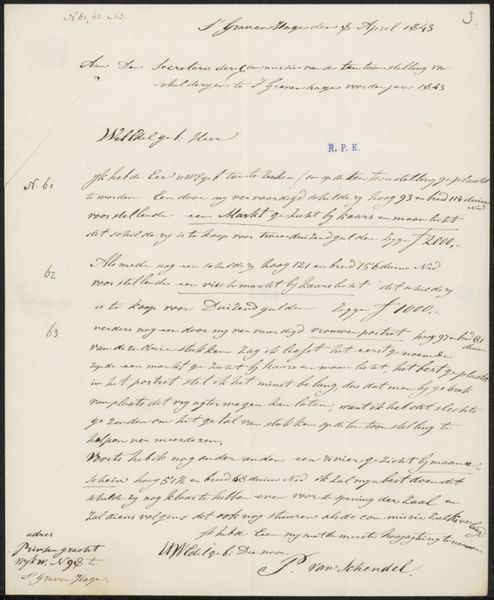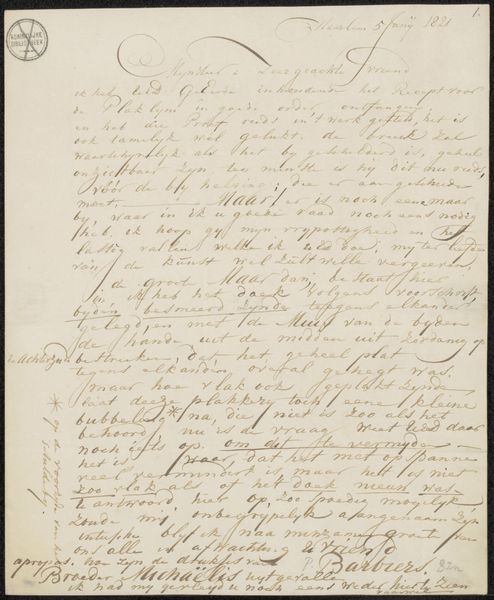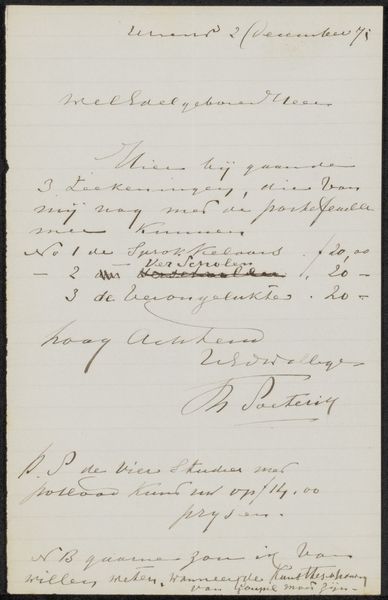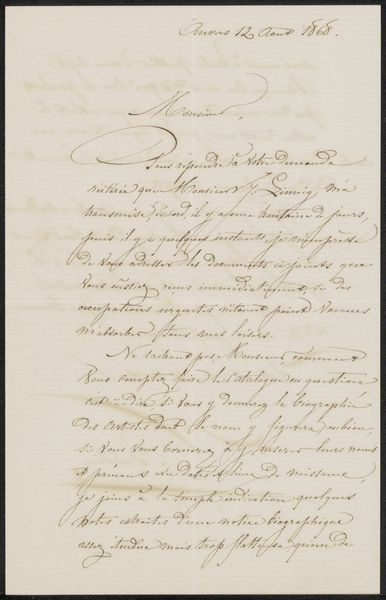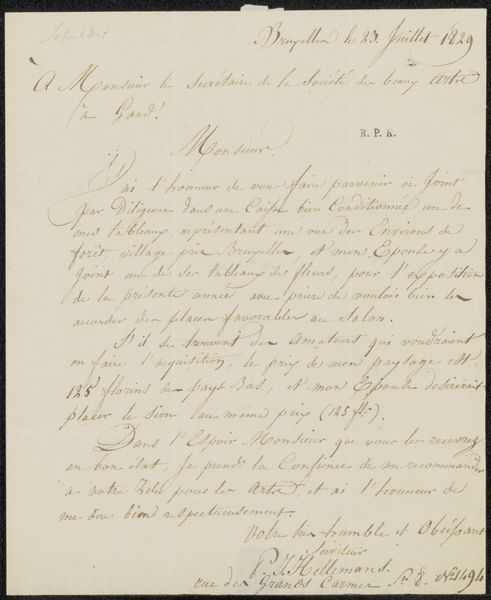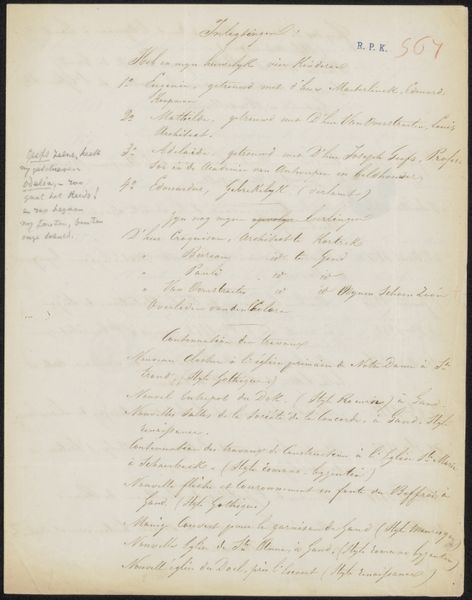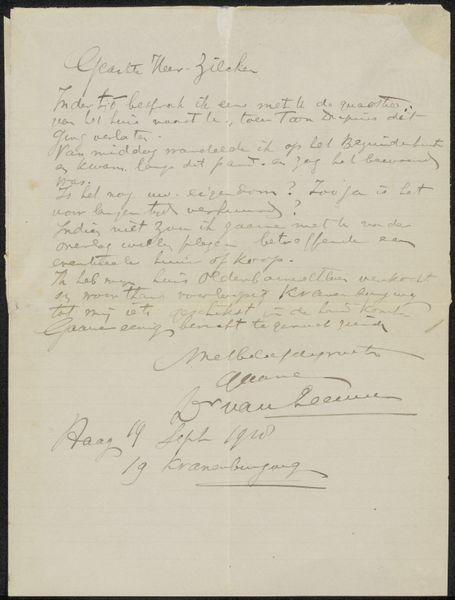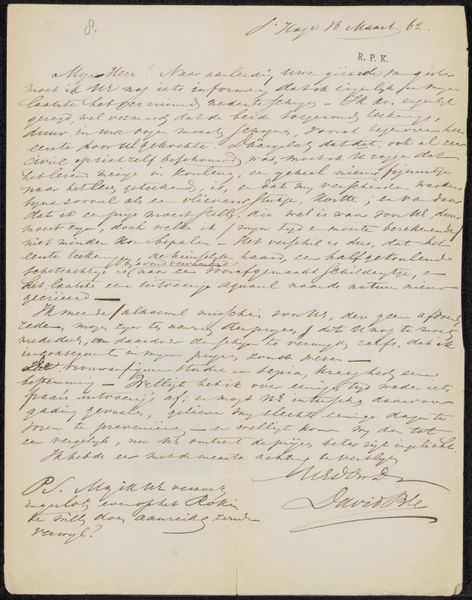
Brief aan de Commissie van de Tentoonstelling van Levende Meesters in Den Haag Possibly 1861 - 1864
0:00
0:00
drawing, paper, ink, pen
#
drawing
#
dutch-golden-age
#
paper
#
ink
#
pen
#
calligraphy
Copyright: Rijks Museum: Open Domain
Curator: We're looking at "Brief aan de Commissie van de Tentoonstelling van Levende Meesters in Den Haag" or, "Letter to the Commission of the Exhibition of Living Masters in The Hague," possibly from between 1861 and 1864, created by Hendrik-Dirk Kruseman Van Elten. It’s a drawing in ink on paper, demonstrating calligraphic style. Editor: Immediately, I'm struck by the intimacy of this piece. It's a letter, so inherently personal, and the cursive script gives it a feeling of history, like peering into someone's private correspondence from a bygone era. Curator: Exactly. This letter provides insight into the art world of the 19th century Netherlands. Kruseman Van Elten submits paintings to a prestigious exhibition, and lists prices, such as 800 guilders for “Het dorp Domburg.” This exposes a very specific commercial element within the art world that doesn't always come to light. Editor: It does, but the mention of specific places, like Domburg and the Rhine, triggers my activist sensibilities, making me wonder about the historical context of land ownership. Were these scenes idealized representations obscuring the realities of those who lived and worked there? Who benefitted from those beautiful landscapes? Curator: That's a valid point. Romantic landscape paintings, especially during this era, tended to gloss over social inequalities, focusing instead on aesthetic beauty and a sense of national pride. He's referencing very particular locations where patrons will know what is being spoken about here. Editor: And that post-colonial connection, where the profits would be transferred abroad – it suggests power structures related to cultural prestige. Are we celebrating Dutch landscape painting in its purest form, or is there a layer of social dynamics we should be critical of? Curator: This drawing and corresponding letter provides an intriguing glimpse into art’s public function at the time. I would add that this gives an understanding into the system as it was. This object presents a view into art display institutions themselves. Editor: Well, the artist highlights how crucial institutional frameworks were to artistic dissemination and legitimization during this period, it reminds me of contemporary debates around diversity and gatekeeping within museums today. Curator: A fascinating point, I must say. This has opened my perspective regarding how social and political landscapes affect the narrative within art itself. Editor: I’ll echo that. The historical pricing of this is now coupled in my mind with a responsibility that museums now take in ensuring a more egalitarian representation.
Comments
No comments
Be the first to comment and join the conversation on the ultimate creative platform.
